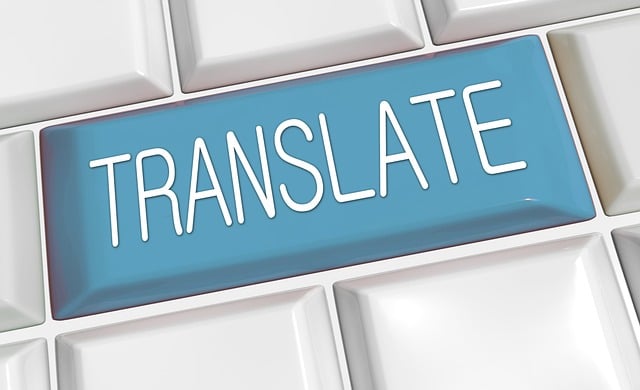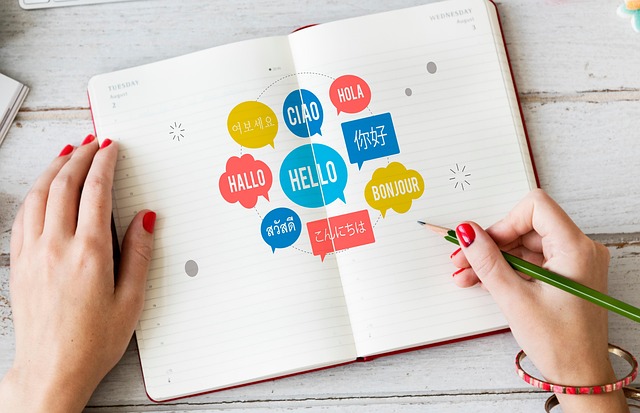
Identifying language and cultural context is crucial for accurate translation. Research tools like dictionaries, apps, and volunteer networks aid in defining phrases. Understanding idioms and nuances ensures messages resonate authentically across languages. Practice with common phrases, study interpreter roles, and engage in crowdsourcing for hands-on learning. Master both linguistic knowledge and cultural subtleties to translate effectively for diverse audiences.
Learn how to seamlessly translate foreign phrases with our step-by-step guide. Start by identifying the language and phrase you want to translate, then leverage powerful online translation tools for initial interpretations. Next, double-check the meaning within the context of the sentence or document. Enhance your skills through consistent practice and study of common, everyday phrases. These strategies will ensure more accurate translations and broaden your multilingual communication abilities.
- Identify Language and Phrase
- Use Online Translation Tools
- Double-Check Meaning Contextually
- Practice and Learn Common Phrases
Identify Language and Phrase

The first step in translating foreign phrases involves identifying both the language and the specific phrase to be translated. This initial determination is crucial, as it sets the foundation for the entire translation process. Once you’ve identified the language, whether it’s Spanish, French, Mandarin, or any other, you can start researching suitable tools and resources. Online dictionaries, mobile apps, and volunteer translator networks are valuable assets for this task. These platforms not only provide quick definitions but also offer insights into idiomatic expressions unique to each language.
For instance, if you encounter a phrase like “Je ne sais quoi” in French, a volunteer translator network could help clarify its meaning—a term that eludes precise translation but conveys a sense of an appealing quality or atmosphere. Moreover, understanding cultural nuances is essential when translating. A simple phrase can carry different connotations depending on the context, so it’s beneficial to explore conference interpretation techniques and reuse translated content from similar projects to ensure accuracy and maintain consistency in your translations. Visit us at interpretation in immigration settings community translation projects anytime for more insights into navigating these linguistic landscapes.
Use Online Translation Tools

In today’s globalized world, international business communications often require translating foreign phrases accurately and efficiently. One of the most effective ways to achieve this is by utilizing online translation tools. These platforms have revolutionized the way we approach language barriers, making complex tasks like translating cultural nuances in interpretation vs. translation a breeze. Machine translation tools have evolved significantly, offering more than just word-for-word conversions; they now cater to specific languages and industries, ensuring precision in international business communications.
For instance, when navigating the complexities of global interactions, keeping cultural nuances in mind during the translate process is crucial. While these online tools can provide quick results, human interpretation remains indispensable for understanding the subtleties of a language. For example, what may seem like a simple phrase in one culture could carry entirely different connotations or meanings in another. This is where professional translators come into play, bridging the gap between oral vs. written translations and ensuring that messages are conveyed accurately, respecting local customs and traditions.
Double-Check Meaning Contextually

When translating foreign phrases, it’s crucial to double-check the meaning within the specific contextual framework. What may sound straightforward in one language can gain entirely different connotations or even lose nuance when directly translated word-for-word into another. For instance, a seemingly simple phrase like “bon appétit” carries positive encouragement for a good meal, but translating it literally could strip away its warm, communal essence.
Understanding the subtle differences between oral vs. written translations is essential in preserving cultural context. While a word-for-word approach might be suitable for technical or scientific texts, it often fails to capture the emotional and idiomatic elements that make up much of everyday language. To truly convey meaning across cultures, translators must step into the shoes of their target audience, considering both direct translations and conceptual equivalents. This involves researching not just individual words but also phrases, proverbs, and cultural references to ensure a message that resonates authentically with readers or listeners from another linguistic background, aligning with your brand’s international reach goals as detailed in our content strategy for international reach.
Practice and Learn Common Phrases

Immerse yourself in the foreign language by practicing and learning common phrases. Start with everyday expressions and gradually expand your vocabulary to include more complex sentences. This hands-on approach helps you gain a deeper understanding of grammatical structures, idiomatic expressions, and cultural nuances that often get lost in literal translations.
As you build your intermediate level language skills, explore the interpreters’ role in diplomacy, which highlights the importance of precise communication in international settings. Simultaneously, engage in linguistic analysis for translators to refine your ability to capture the essence of a text while respecting its original intent. Remember, mastering both translation and interpretation involves not just knowing the words but also understanding the cultural nuances that can significantly impact how a phrase is interpreted versus translated. Find us at crowdsourcing translations for a collaborative learning experience that brings diverse perspectives into play.
Translating foreign phrases can be a straightforward process with the right approach. Start by identifying the language and phrase, then leverage online translation tools for quick results. Always double-check the meaning contextually to ensure accuracy. Regular practice and learning of common phrases will significantly enhance your translation skills over time, making you more proficient in navigating multilingual communication.






